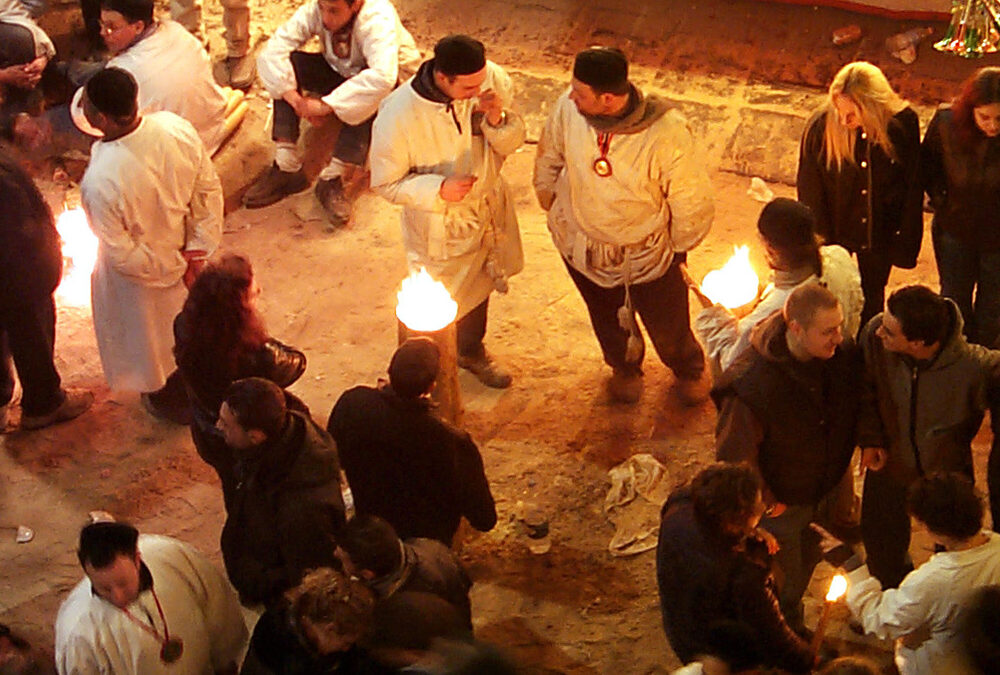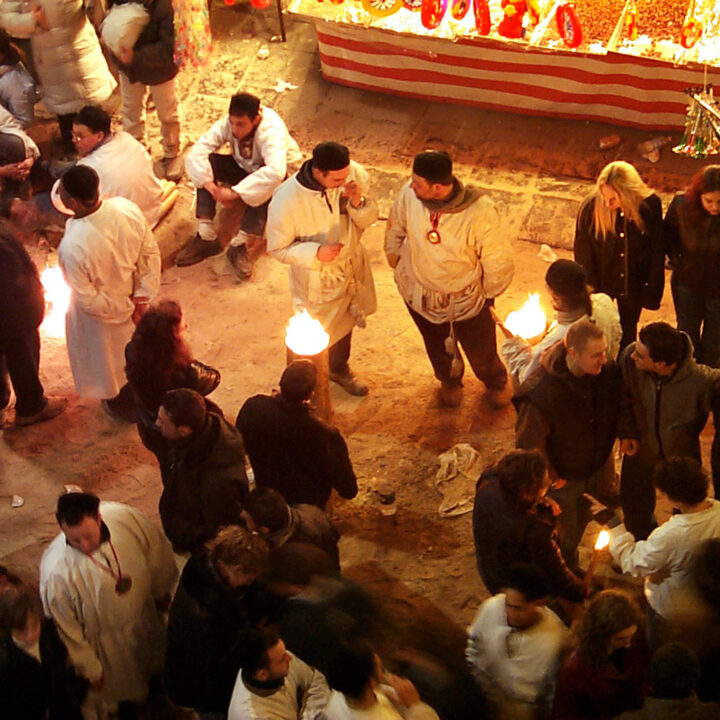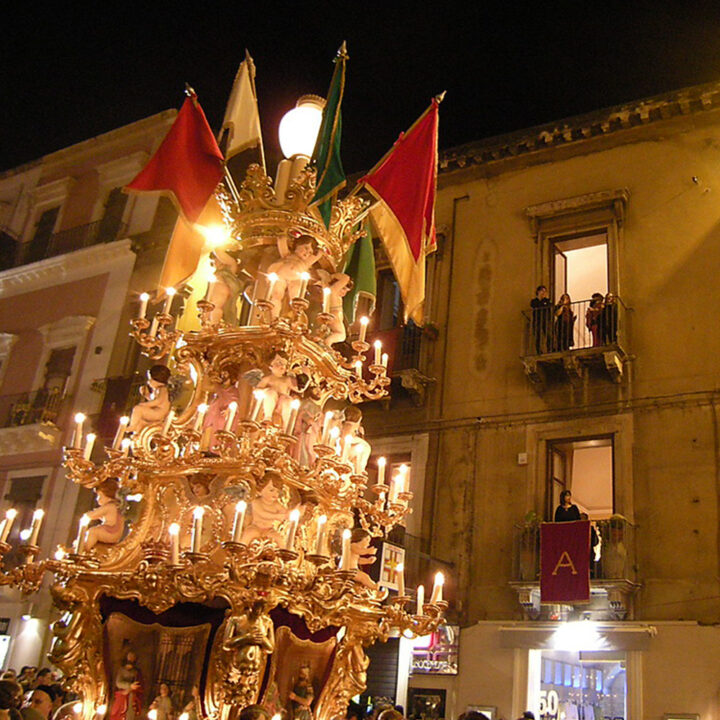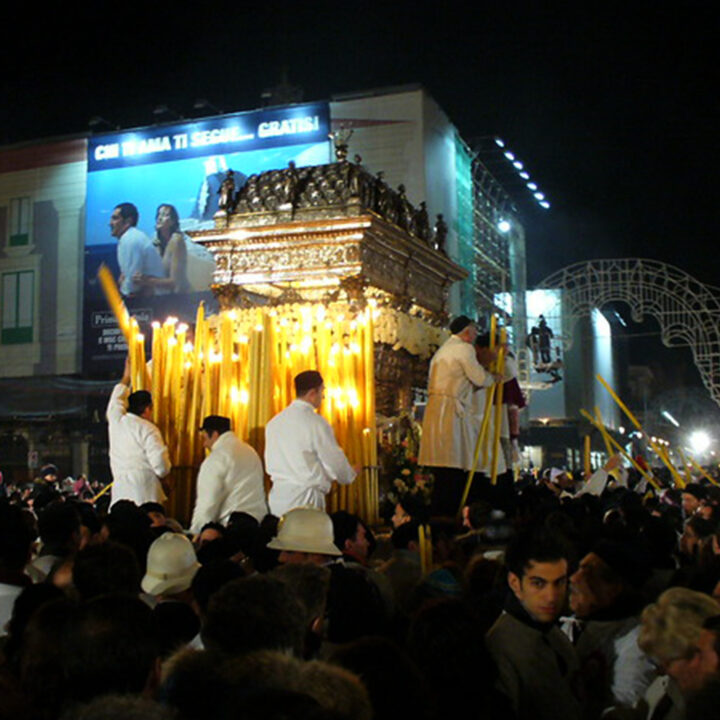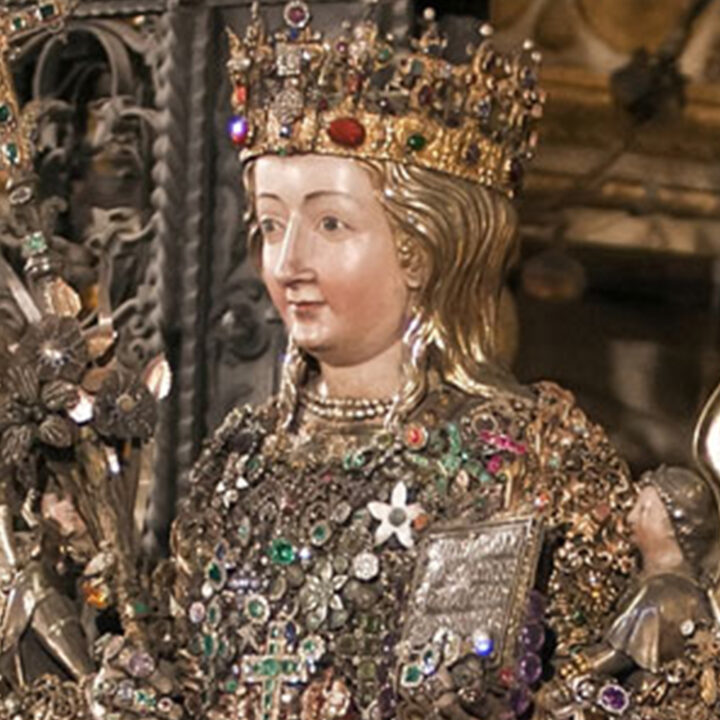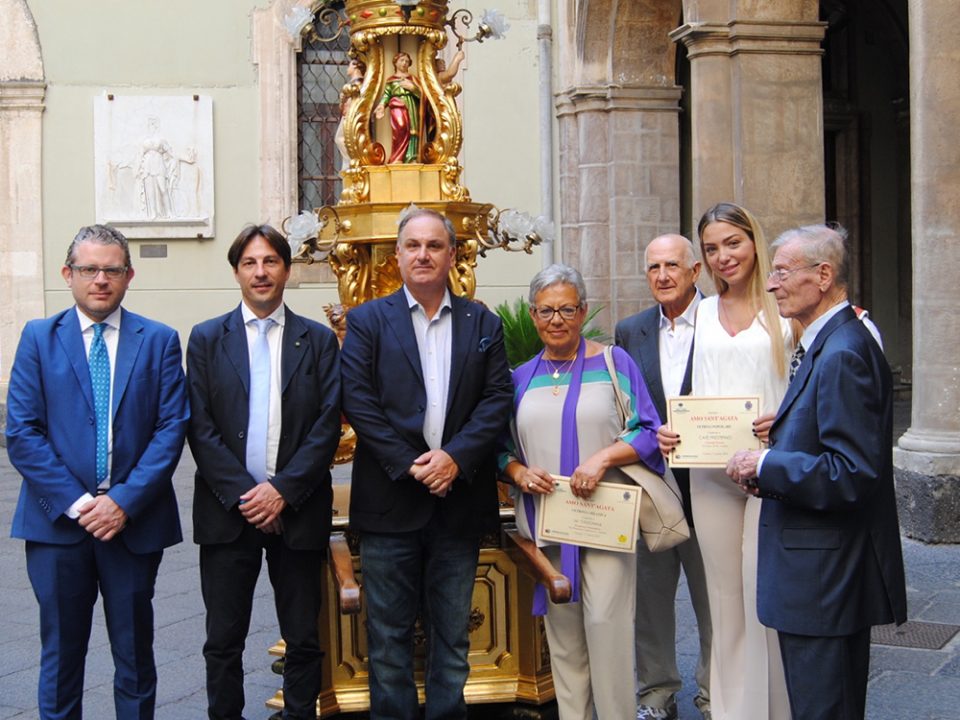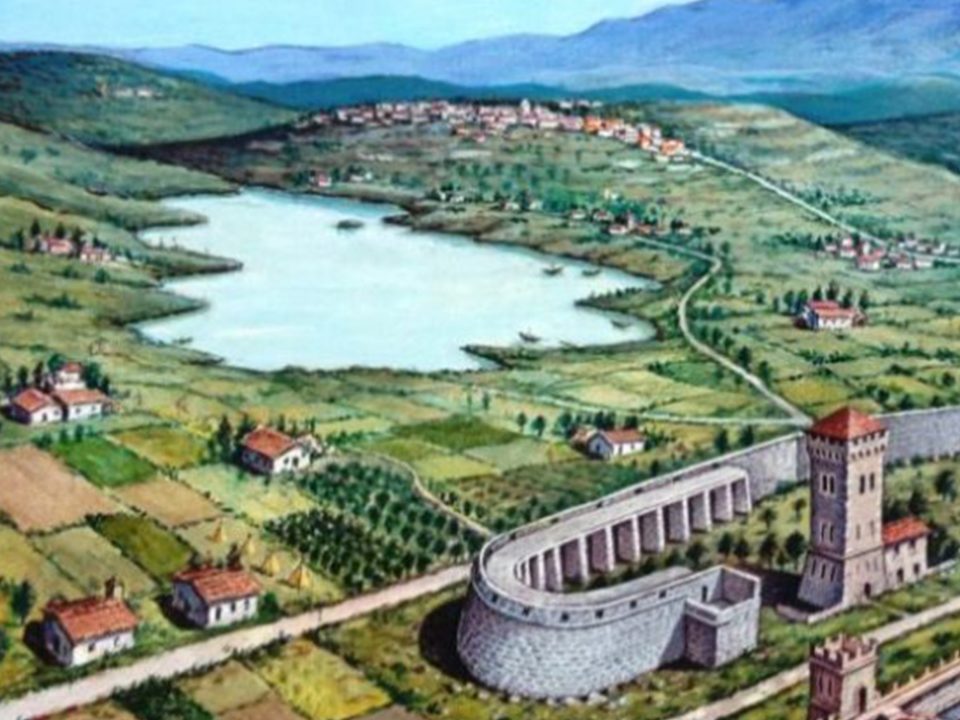Why is S. Agata the third most famous religious festival in the world?
Like rivers in flood that overflow and flood everything around them, so the devotees of Sant’Agata with the traditional white sack fill the streets of the city of Catania to honor the patron saint.
Sant'Agata, in fact, is the third most famous religious festival in the world, after the Holy Week in Seville and the Corpus Christi Festival in Guzco in Peru, precisely because of the heartfelt participation of the citizens of Catania and all the people who reach the Etna city from 3 to 5 February to experience the emotions, folklore and spirituality of this festival.
It has been estimated, in fact, that in those days Catania reaches about one million people among devotees to the saint of Sicilian miracles, as well as tourists and curious people from all over the world.
Together with the World Heritage Site of the late Baroque cities of the Val di Noto (south-eastern Sicily) conferred by UNESCO in 2002, the Festa di Sant'Agata is an Etna Anthropological Heritage as a World Heritage Site of the City of Catania in the world since 2005 The origins of the patron saint's veneration can be traced back to the following year to the martyrdom of the young Agate, or in 252.
There is greater uncertainty about the beginning of the celebration of the party. The first celebrations occurred, in fact, only spontaneously on August 17, 1126 when, after 86 years, the remains of the Saint, which had been stolen and transferred to Constantinople, were brought back to the city by two soldiers. Initially the celebrations were held only inside the cathedral but from 1376, the year of construction of the vara (fercolo), in wood, it is assumed that the celebrations as we know them have started, with the procession through the streets of the city. Furthermore, what is known is that until 1692 the party took place in one day, on February 4th. From 1712 the party took on greater importance by being structured over two days, on 4 and 5 February. This is probably due in large part to the fact that following the devastating earthquake of 1693 the city was rebuilt and took on ever larger dimensions, so as not to make the procession and the tour of the neighborhoods possible in one day.
